Inside The New York Botanical Garden
Continuing Education
Posted in Adult Education on October 1 2013, by Lansing Moore
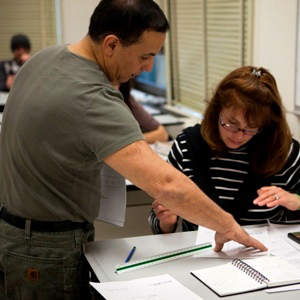 For over thirty years Bill Einhorn has instructed our Landscape Design students, passing on the technical skills and foundational knowledge for creating hospitable and healthy green spaces. As our longtime instructor and the president of the New York chapter of the Association of Professional Landscape Designers, we thought Bill would be the perfect person to ask about the newest trends emerging in the landscape design industry, and the kinds of projects our graduates can expect to see as they venture out into the field.
For over thirty years Bill Einhorn has instructed our Landscape Design students, passing on the technical skills and foundational knowledge for creating hospitable and healthy green spaces. As our longtime instructor and the president of the New York chapter of the Association of Professional Landscape Designers, we thought Bill would be the perfect person to ask about the newest trends emerging in the landscape design industry, and the kinds of projects our graduates can expect to see as they venture out into the field.
What recent trends are you noticing in the industry and in designing projects for clients?
In both the public and private sector clients are more in tune with sustainability and the use of native plants. Green roofs and rain gardens are not new trends anymore and the public is much more aware of sustainable practice. However, I have found that the newer regulations in many towns that I work in that insist on sustainable practice, storm water management, and wetland regulations can add prohibitive costs to projects where the client either kills the project or cuts back on aesthetics in order to put the money into following the new rules. Other trends I see in the high-end market are an increased demand for an outdoor kitchen, fireplace, fire pit or a spa. Clients want to extend their enjoyment of the shortened outdoor season in the northeast. It is exciting that I am now designing projects that I would normally see out on the west coast.
Read More
Posted in Learning Experiences on November 23 2010, by Plant Talk
Landscape Design Alumni Give Back in Honor of Fellow Student
 |
Valerie D’Antonio holds a Certificate in Landscape Design from The New York Botanical Garden’s Continuing Education program and is principal and owner of D’Antonio Landscape Designs, Inc. |
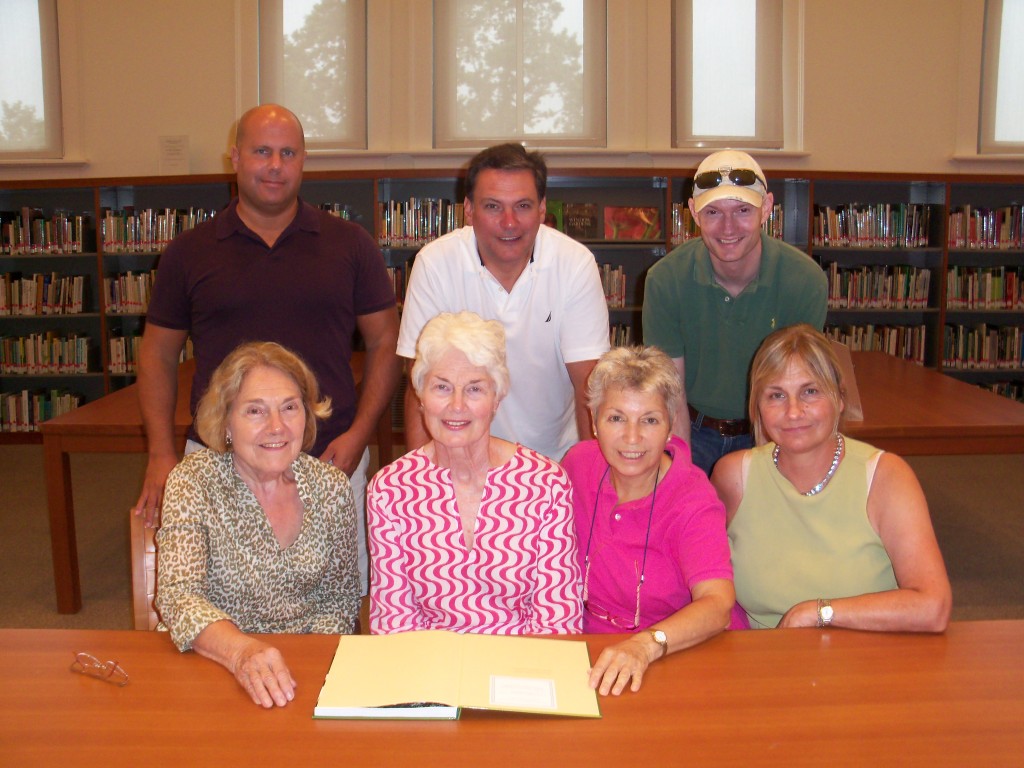 The principle of genius loci, a Latin phrase indicating the spirit of a place, is one that landscape designers use to get a sense of a space before they begin to create a garden.
The principle of genius loci, a Latin phrase indicating the spirit of a place, is one that landscape designers use to get a sense of a space before they begin to create a garden.
The idea is that every space has its own unique qualities and atmosphere, factors that should be respected during design. There is a feeling one gets when experiencing the intangibles that define a space. For example, a long, winding path through the woods can evoke a quiet, churchlike air.
This particular drizzly, cloudy day as I drive through the Conservatory Gate at The New York Botanical Garden, which I have done countless times, I am greeted by exuberant waves of giant striped grasses, blood-red coleus, and purple Russian sage, which light up the gray skies and fill me with excitement and anticipation.
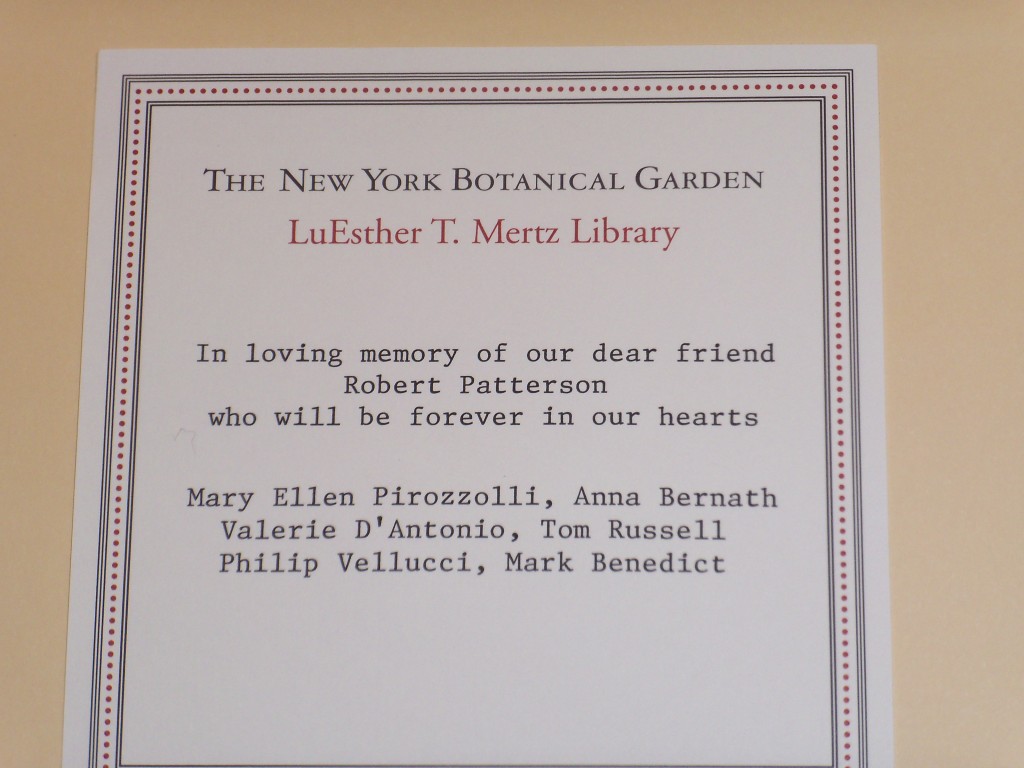 Another wonderful space, the allée of majestic tulip trees, leads me to the beautifully restored Library building, which gives me a feeling of calm and wonder. The Jane Watson Irwin Perennial Garden, designed by Lynden B. Miller and punctuated with evergreen ‘Sky Pencil’ hollies, Japanese maple fall-colored leaves, and bird-favorite seed heads of perennial black-eyed Susans and coneflowers, is another one of the Garden’s spaces that exudes a feeling of lushness and beauty.
Another wonderful space, the allée of majestic tulip trees, leads me to the beautifully restored Library building, which gives me a feeling of calm and wonder. The Jane Watson Irwin Perennial Garden, designed by Lynden B. Miller and punctuated with evergreen ‘Sky Pencil’ hollies, Japanese maple fall-colored leaves, and bird-favorite seed heads of perennial black-eyed Susans and coneflowers, is another one of the Garden’s spaces that exudes a feeling of lushness and beauty.
Read More
Posted in Learning Experiences on January 27 2010, by Plant Talk
Career-Changer Redirected Through Continuing Education Classes
 |
Valerie D’Antonio holds a Certificate in Landscape Design from The New York Botanical Garden’s Continuing Education program and is principal and owner of D’Antonio Landscape Design, Inc. She will tell her career-changing story during the free Career Night on February 3. |
In the early 1980s I bought a small row house in Hoboken, N.J., on a street named Garden (who knew?!). After the closing I popped open a bottle of Moet, looked out the kitchen window at my new backyard, and thought, “What do I do with that space?”
At the time I worked for AT&T, and co-workers pointed me in the direction of The New York Botanical Garden, where I began to seek gardening advice. I decided to start small and attended NYBG’s one-day classes on window-box gardening. The classes gave me the confidence to plant and install boxes on the five front windows of my three-story house. The bright red geraniums, purple lobelia, and white alyssum were striking against the house’s white-painted brick. Soon after, my neighbors began asking me to plant their window boxes.
Twenty years later, after I left my corporate job, NYBG again came to my rescue. I was still lamenting my lackluster backyard when I received the Garden’s Continuing Education catalog where I found that the Garden offers certificate programs, lectures, and seminars aimed at developing a career in the world of horticulture.
Read More
Posted in Learning Experiences on December 17 2009, by Plant Talk
Groundbreaking Speakers Challenge Traditional Ways
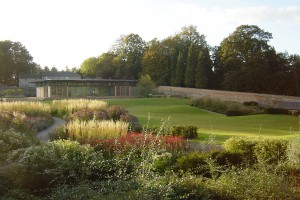 The life of a gardener is filled with many “Aha!” moments. But when I opened the NYBG Fall/Winter Catalog and turned to page 62, to the winter gardening lecture series lineup of speakers, it was not an “Aha!” moment but rather a “Wow!” moment. Three names jumped off the page: Dan Pearson, Barbara Damrosch and Fritz Haeg. From the Ground Up: Gardens Re-Imagined is the perfect name for a series featuring this rabble-rousing trio.
The life of a gardener is filled with many “Aha!” moments. But when I opened the NYBG Fall/Winter Catalog and turned to page 62, to the winter gardening lecture series lineup of speakers, it was not an “Aha!” moment but rather a “Wow!” moment. Three names jumped off the page: Dan Pearson, Barbara Damrosch and Fritz Haeg. From the Ground Up: Gardens Re-Imagined is the perfect name for a series featuring this rabble-rousing trio.
In the forward to Dan Pearson’s new book, Spirit: Garden Inspiration, Beth Chatto writes, “Dan Pearson shows how the most intimidating situations can be transformed. It takes a rare mind and eye to break away from our traditional view of what makes a garden…” Dan’s also a great plantsman, as I well know, but that’s not why I’m going to his lecture on January 21. I am going because I know that Dan will challenge my notions of order, color, and texture.
Read More
Posted in Learning Experiences on October 14 2009, by Plant Talk
All-Day Workshop and Dozens of Classes Help You Along
 |
Duncan Himmelman, Ph.D., is Program Manager for Continuing Education. |
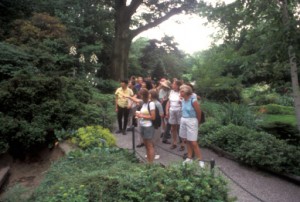 The first time I heard Grandpa say “Let’s put the garden to bed” I had visions of pillows nestled between the tomato plants. Of course, being 5 years old, what would I know about finishing up in the garden, let alone “putting it to bed”?
The first time I heard Grandpa say “Let’s put the garden to bed” I had visions of pillows nestled between the tomato plants. Of course, being 5 years old, what would I know about finishing up in the garden, let alone “putting it to bed”?
Now, after decades of tending to gardens of all types, I am more than well acquainted with the assortment of tasks that ensure all is in good shape before the onset of winter and that autumn is a great time for more than just tidying up the perennial patch. The quietude of fall lets you review the year’s successes and near-misses and inspires you to develop plans for “what’s next.” That’s what prompted me to design the Fall into Place: Autumn Gardening program slated for Saturday, October 17, during which a talented team of expert gardeners will introduce you to the benefits of fall gardening.
Autumn is perfect for planting trees and shrubs that add color, texture, and structure to the landscape. Container gardening using hardy plants alongside exotic succulents stretches the season well past Thanksgiving. Look ahead to brightening up the garden in spring with fall-planted bulbs, designed for maximum impact once winter fades. Become familiar with the spectacular displays of ornamental grasses that heighten the effects of the border from fall through winter. All of this on one day!
In addition to this special program, the Adult Education program offers courses that illuminate the principles of good gardening practices and teach you how to transform your garden bounty into tantalizing herbal products. Or jump into hands-on botanical crafts courses and design autumn-themed garlands, wreaths, and centerpieces to beautify seasonal table settings. (Watch a video of one of our instructors creating a holiday wreath and a fresh floral design.)
So, don’t put away those gardening gloves quite yet! Partake in our autumn courses and discover great new plants, the joy of putting the garden to bed properly, and the excitement of designing your spring bulb display for that spectacular burst of color after the snow melts. The more you can get done in the fall, the faster things get moving in the spring.
For more information or to register, call 718-817-8747.
Take a Class
Posted in Learning Experiences on September 9 2009, by Plant Talk
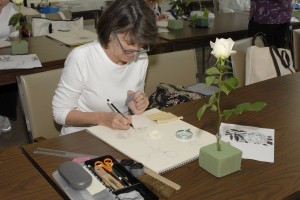 Twice a year The New York Botanical Garden hosts a free Open House where people can sample some of the Continuing Education course offerings in an informal but informative setting. The upcoming event on September 12 will also feature Career Information Sessions, at which you can hear how former students changed their lives and pursued their passions in new careers.
Twice a year The New York Botanical Garden hosts a free Open House where people can sample some of the Continuing Education course offerings in an informal but informative setting. The upcoming event on September 12 will also feature Career Information Sessions, at which you can hear how former students changed their lives and pursued their passions in new careers.
I have been attending these Open Houses for three years now as a program coordinator and instructor. Last spring, in addition to offering a demonstration by a botanical instructor, we offered for the first time a mini class in botanical illustration. I taught a lesson in colored pencil in which participants were given my favorite watercolor paper and pencils with which to try and render a simple fruit in color. This year we will again offer a similar mini class.
Some who had been hesitant about their ability to draw were in for a pleasant surprise when exposed to a very simple step-by-step procedure to drawing. Many of those who attended that mini class liked it so much that they signed up for full classes and are now enthusiastic students in the program.
For those who have never drawn, as well as for those who are professional artists in other fields, the Botanical Art and Illustration program at NYBG offers an opportunity to learn drawing and to study plants up close.
In these difficult economic times I have seen an increase in students from other professions with time on their hands. What a wonderful opportunity to study botanical illustration, leading to a new passion and the possibility of enhancing an existing profession.
I have also noticed an increase in botanical illustration in the world at large as evidenced by three recent magazine articles on the topic in Victoria (April 2009), Fine Art Connoisseur (July/August 2009), and The Artist’s Magazine (September), in which I am profiled.
And if botanical illustration isn’t your thing, you are sure to find other areas of interest at the Open House: Floral Design, Landscape Design, Gardening, and more.
Come to NYBG for a day of exploration of the Continuing Education program. I hope to see you there!
Posted in Learning Experiences, People on June 3 2009, by Plant Talk
Earns Certificate to Be Awarded at Weekend Ceremony
 |
Stephan Chenault is Director of Science Development. |
This Sunday I will receive my Continuing Education Certificate in Botany. I enrolled in the program soon after joining the Garden’s staff, in August 1998. My decision to study botany was based on a love of nature that dates from my childhood. I still remember my mother taking me on a walk in the woods around Lake George at the age of three and how much I appreciated and was fascinated by acorns, oak leaves, chipmunks, and mushrooms. My goal in pursuing the Botany Certificate was to gain more knowledge of plant life and the natural world so that I would have a key to turn other people on to the natural world.
My past experiences in nature education have been as a counselor and teacher at a camp in New Hampshire. Helping children encounter and enjoy the environment through hikes, nature walks, aquarium- and terrarium-building, gardening, and art has been one of my most rewarding vocations. Later, as a volunteer activist in the Sierra Club, the country’s largest environmental organization, I would participate and help lead hikes with my activist collaborators. Many of these volunteer partners switched careers and became full-time professional environmental leaders, and I, myself, switched careers to take on a position in science fundraising for The New York Botanical Garden.
The knowledge I have gained from being a student in the Continuing Education program has been very helpful to me in understanding the Garden’s scientific programs and describing them to potential donors in the philanthropic community.
Read More
Posted in Learning Experiences, People on April 28 2009, by Plant Talk
 |
Anne Meore is a graduate of Continuing Education’s Horticultural Therapy program and has her own horticultural therapy consulting business, Planthropy, LLC. |
It’s not always easy to see where you are going when on the proverbial “career path.” At times the path tends to be longer than expected and sometimes a bit bumpy. At age 44, I can finally look back with a bit of clarity and see how I finally made it to today.
With advanced degrees in Elementary Education, Psychology, Counseling, and Social Work, I’ve had the opportunity over the years to work with various populations, each with differing needs and more than I could adequately provide for, especially from behind a desk.
But that’s where it began for me. During counseling sessions, something would happen when we fiddled with the plant on my desk, listened to the sounds of birds, smelled the fresh air through the screen, and watched as Mother Nature danced outside the office window. I couldn’t put my finger on exactly what made it work, but I knew it did work. So I began conducting sessions outdoors in the natural world. A novel idea, I thought. I think I will call this therapeutic milieu “horticultural therapy.”
It wasn’t until I received the Continuing Education catalog that I discovered that horticultural therapy wasn’t my invention after all. How naive of me to try to take credit for a field that has been in existence since the time of Egyptian civilization.
I enrolled in Introduction to Horticultural Therapy and was led through the historical background, foundations, and applications of this field by Katherine Sabatino. An experienced horticultural therapist, she was able to take years of personal contemplation and tie it up in a nice big bow for me. My decision was made, my career path defined, with all arrows pointing toward horticultural therapy.
The instructional staff facilitated my learning process throughout the course of study. The expertise and experience of these very people are what distinguishes NYBG’s program from others.
Read More
Posted in Learning Experiences on March 26 2009, by Plant Talk
 |
Brad Roeller is a research horticulturalist at the Cary Institute of Ecosystem Studies, formerly the Mary Flagler Cary Arboretum of The New York Botanical Garden. He has been an instructor at the Botanical Garden for over 25 years.
|
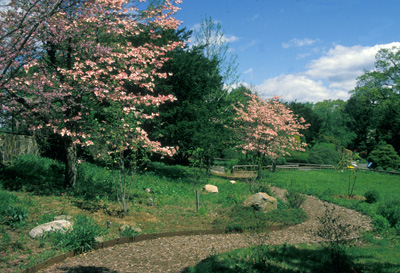 Over my three decades of gardening in the public arena, I’ve seen numerous landscaping trends come and go. However, landscaping with natives has always been popular, with current interest in this genre at an all-time high—and with good reason! A designer with a strong native plant background can meet virtually any design need by using native plants. Further, these days there seems to be something of a clarion call in the green industry to landscape with natives. I’m witnessing private, commercial, and even municipal planting specifications that are mandating, or at least strongly encouraging, using native plants in landscape designs.
Over my three decades of gardening in the public arena, I’ve seen numerous landscaping trends come and go. However, landscaping with natives has always been popular, with current interest in this genre at an all-time high—and with good reason! A designer with a strong native plant background can meet virtually any design need by using native plants. Further, these days there seems to be something of a clarion call in the green industry to landscape with natives. I’m witnessing private, commercial, and even municipal planting specifications that are mandating, or at least strongly encouraging, using native plants in landscape designs.
While this trend is sweeping the country, landscaping with natives is often done without much thought. Typically the designer is just substituting native counterparts of exotic plants using conventional design criteria. As with the increased interest in natives, another “in” industry phenomena is the concept of creating “sustainable” gardens and landscapes. My definition of a sustainable landscape is one where, once the plants are established (typically a one- to two-year process) the need for additional irrigation, fertilization, or pesticides should be nil. Sounds nice, but I have seen very few examples of sustainable landscapes.
Many “sustainable” landscape designers are using the “natural” model, going “wild” by using native plants in a more naturalistic design. While these intentions are laudable, unless one thoroughly analyzes the growing characteristics of the property and makes wise plant selections based on their investigations, their plantings are destined to need continued sustenance. Even if the necessary site investigations are made and plants are selected based upon growing constraints, unless accepted planting and post-planting care guidelines are used, even the best natives for your site will perform poorly.
One popular application associated with landscaping with natives involves restoration projects in woodlands, meadows, wetlands or other riparian areas where the goal is to introduce indigenous native species back into their representative habitats. This approach is also finding some popularity in residential and even commercial landscapes. While it is typically used for large areas that have varying degrees of functioning native plant communities present, it does have a place in “small” landscapes. The time has come for ecologically designed landscape, and there is no reason that even the smallest of landscapes can’t duplicate a particular and appropriate habitat and landscape with plants obligate to that ecological niche.
This approach is not for the faint of heart and does require something of a learning curve. A working knowledge of the natives of your region coupled with an understanding of some important ecological principles is essential in establishing sustainable native plant communities.
Brad Roeller will be teaching three classes March 28 during Native Plants Saturday, an all-day Continuing Education program in the Watson Education Building at The New York Botanical Garden.
Posted in Learning Experiences, Programs and Events on March 12 2009, by Plant Talk
 Carol Capobianco is Editorial Content Manager at The New York Botanical Garden.
Carol Capobianco is Editorial Content Manager at The New York Botanical Garden.
I recently completed a New York Botanical Garden Continuing Education course, Soil Science for Gardeners, with instructor David Bulpitt.
While that’s not remarkable in itself, it’s noteworthy because I had first become acquainted with David Bulpitt and his passion for soils at a Continuing Education Open House and promised myself that one day I would take his course. That was nine years ago!
It was the spring of 2000 when I attended the Open House to learn about taking classes so that I could finally gain some theory for the seat-of-the-pants home gardening I’d been doing and to investigate the various certificate programs offered at The New York Botanical Garden—the definitive source of everything related to plants.
At the free Open Houses, which are held twice a year, on a single day you can wander in and out of ongoing mini-classes on subjects related to seven main disciplines, some of which can lead to a career change such as Landscape Design or Horticultural Therapy, as well as hear about the School of Professional Horticulture. The setting is informal, you meet some of the instructors and program coordinators, and you feel a kindred spiritedness with the other searching, prospective students.
That day I was determined to at least poke my head into each of the rooms hosting the different topics so I could sample all the possibilities. I hesitated, however, when I came to the Horticulture presentation titled “Soil Science.” Oooh. That sounded boring. But, the curious sort that I am, I took a deep breath and walked in. Arrayed on tables were several samples of soils and testing paraphernalia. David, who led the session, was talking animatedly about soil texture and structure and permeability. I sat there fascinated. It was an hour later when I finally dislodged myself, knowing that I wanted to make my way to other classrooms and subjects.
After that Open House I registered for several classes, mostly in gardening and botany, all of which I completed with high marks. At the time, David Bulpitt was teaching Soil Science only as a two-course offering in the Horticulture program, which was too intensive for my needs. And so, I put the encounter in my memory bank. However, when I perused the Continuing Education Fall 2008–Winter 2009 Catalog and realized that he now teaches a more condensed, less-extensive class for the Gardening discipline as well, I immediately registered for the course.
Four weeks and lots of weighty information later, I’m feeling a great sense of fulfillment, and I’m armed with important new knowledge to take into my home garden this spring. The experience has renewed my excitement to learn, and I’ve begun skimming the newly released Spring–Summer Catalog and even the online version to find new courses to take. I invite you to attend this weekend’s Open House and begin your own journey.
 For over thirty years Bill Einhorn has instructed our Landscape Design students, passing on the technical skills and foundational knowledge for creating hospitable and healthy green spaces. As our longtime instructor and the president of the New York chapter of the Association of Professional Landscape Designers, we thought Bill would be the perfect person to ask about the newest trends emerging in the landscape design industry, and the kinds of projects our graduates can expect to see as they venture out into the field.
For over thirty years Bill Einhorn has instructed our Landscape Design students, passing on the technical skills and foundational knowledge for creating hospitable and healthy green spaces. As our longtime instructor and the president of the New York chapter of the Association of Professional Landscape Designers, we thought Bill would be the perfect person to ask about the newest trends emerging in the landscape design industry, and the kinds of projects our graduates can expect to see as they venture out into the field.












 Over my three decades of gardening in the public arena, I’ve seen numerous landscaping trends come and go. However, landscaping with natives has always been popular, with current interest in this genre at an all-time high—and with good reason! A designer with a strong native plant background can meet virtually any design need by using native plants. Further, these days there seems to be something of a clarion call in the green industry to landscape with natives. I’m witnessing private, commercial, and even municipal planting specifications that are mandating, or at least strongly encouraging, using native plants in landscape designs.
Over my three decades of gardening in the public arena, I’ve seen numerous landscaping trends come and go. However, landscaping with natives has always been popular, with current interest in this genre at an all-time high—and with good reason! A designer with a strong native plant background can meet virtually any design need by using native plants. Further, these days there seems to be something of a clarion call in the green industry to landscape with natives. I’m witnessing private, commercial, and even municipal planting specifications that are mandating, or at least strongly encouraging, using native plants in landscape designs.